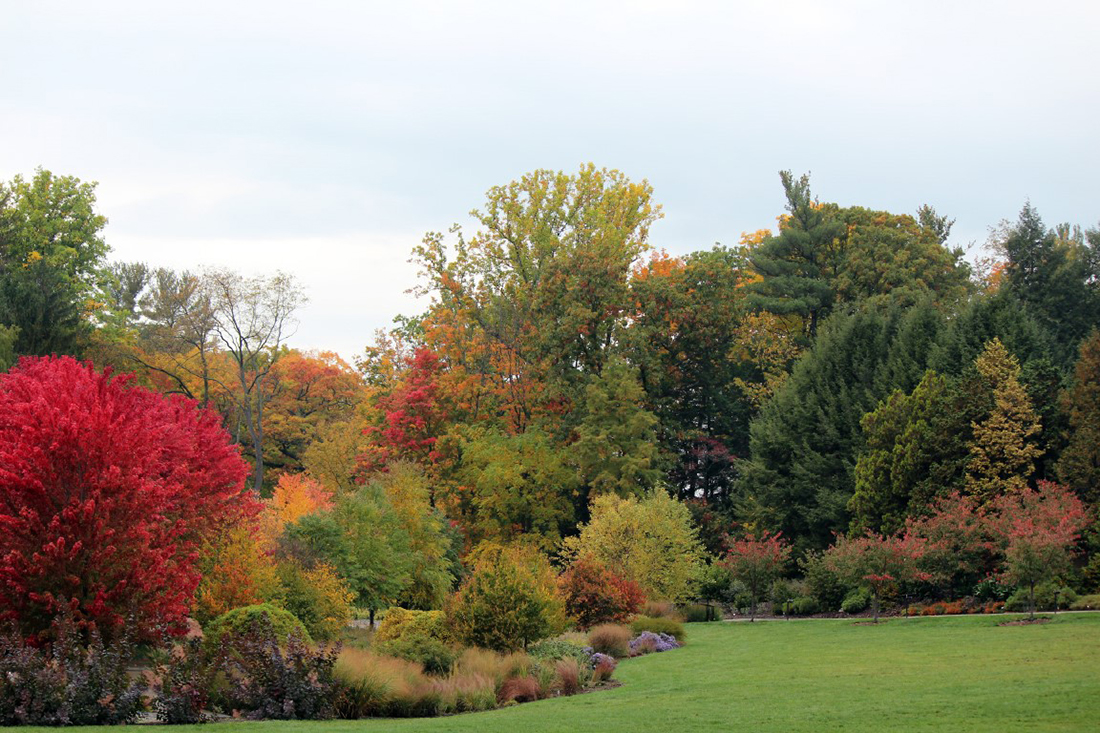Board approves Cornell Botanic Gardens naming
By Matt Hayes

Cornell’s living botanical and natural areas collection is getting a new name.
Cornell Botanic Gardens was officially approved Oct. 28 by the Cornell University Board of Trustees, the final step in a broad rebranding effort begun more than two years ago. The new moniker replaces Cornell Plantations as the name of the world-class botanic gardens, arboretum and more than 3,500 acres of natural areas tended by an organization that welcomes to campus more than 70,000 visitors each year.
“We are thrilled by the board’s encouragement as we open a new chapter in our long and illustrious history,” said Christopher Dunn, the Elizabeth Newman Wilds Director. “Cornell Botanic Gardens expresses our position as a full-fledged public garden with first-class horticultural collections and some of the finest conservation and education programs anywhere in the world.”
Kathryn Boor, the Ronald P. Lynch Dean of the College of Agriculture and Life Sciences (CALS), says the change affirms the college’s and university’s commitment to excellence, openness and diversity.
”Cornell is unrivaled for the astonishing natural beauty accessible right here on campus. The iconic landscapes beloved by generations of students are due in large measure to what is found at Cornell Botanic Gardens,” said Boor. “The new identity more clearly describes the diverse collection of plant life that truly makes Cornell Botanic Gardens not just a treasure on our campus, but a destination for visitors from around the world.”
Since 2014, leadership at CALS and the Cornell Botanic Gardens have thoroughly explored stakeholders’ feelings about a possible rebranding. That process revealed strong support for a move away from a name that many felt did not adequately reflect the full extent of what the organization offers to the university and community. In addition, for many the name Plantations evoked negative associations with slavery and racial oppression.
A broad consensus of those surveyed agreed that Cornell Botanic Gardens more appropriately identifies the organization as a public garden, and reflects its diverse collections, educational programs and vision for the future.
Dunn says the change is an opportunity to promote and strengthen the relevance of the organization and its new mission, “to inspire people – through cultivation, conservation and education – to understand, appreciate and nurture plants and the cultures they sustain.” He envisions deeper engagement with students and faculty as Cornell Botanic Gardens focuses on addressing and interpreting important issues, such as climate change, biocultural conservation and other critical concerns.
That new direction, enshrined in the theme of “cultivation, conservation and education,” according to Dunn, touches on the academic mission of virtually every discipline at Cornell, and more tightly aligns the botanic gardens with all aspects of the university’s academic priorities.
By size, Cornell Botanic Gardens is in the top five gardens in North America. More than 50,000 plants are found in the 150 acres of cultivated gardens, which include world-class collections of herbs, rhododendrons, conifers, maples, oaks and flowering trees. The Cornell Botanic Gardens also stewards 3,400 acres of natural area preserves on campus and throughout Tompkins County. These holdings along with educational outreach efforts support teaching and research at Cornell and learning opportunities for all ages.
Last year the Botanic Gardens’ F.R. Newman Arboretum was ranked the most beautiful college arboretum in the country. The organization’s stewardship of natural areas that are home to rare species helped the university earn full points for biodiversity conservation and, for a fourth consecutive year, attain gold status in the Sustainability Tracking, Assessment and Rating (STAR) System, a national framework for colleges and universities to track sustainability efforts.
While the term Plantations (applied in 1944, replacing what had been Cornell University Arboretum since 1928) is being left behind, the name will not be erased. Dunn says the organization will fully acknowledge former names and history in its informational materials and educational programs.
Design of a Cornell Botanic Gardens logo is underway. New permanent signage is expected to be installed by spring 2017. The cost for the rebranding efforts will be shared by Cornell Botanic Gardens, CALS and the university.
Matt Hayes is managing editor and social media officer for the College of Agriculture and Life Sciences.
Media Contact
Get Cornell news delivered right to your inbox.
Subscribe